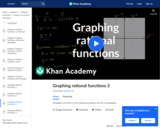
Asymptotes of Rational Functions
- Subject:
- Algebra
- Mathematics
- Material Type:
- Lesson
- Provider:
- Khan Academy
- Author:
- Sal Khan
- Date Added:
- 09/22/2013

Asymptotes of Rational Functions
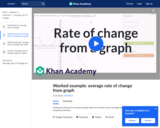
This video is from the Khan Academy subject of Math on the topic of Algebra and it covers Average Rate of Change Example 1).

This video is from the Khan Academy subject of Math on the topic of Algebra and it covers Average Rate of Change Example 3).
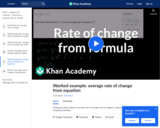
This video is from the Khan Academy subject of Math on the topic of Algebra and it covers Average rate of change when function defined by equation.
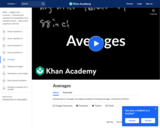
Introduction to averages and algebra problems involving averages.

Constructing and solving a basic equation based on a word problem.

Why the abstraction of mathematics is so fundamental
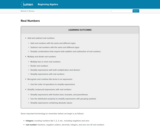
Real Numbers

This eCourse (module) is designed to stand alone as an instructional tool to cover the topic of First-Degree Equations and Inequalities in Beginning Algebra. Learners would benefit by reviewing modules in sequence. In this module you will use the properties of equality and real numbers to solve first-degree equations, inequalities, and absolute values.

This course covers a range of algebraic topics: Setting up and solving linear equations, graphing, finding linear relations, solving systems of equations, working with polynomials, factoring, working with rational and radical expressions, solving rational and radical equations, solving quadratic equations, and working with functions. More importantly, this course is intended to provide you with a solid foundation for the rest of your math courses. As such, emphasis will be placed on mathematical reasoning, not just memorizing procedures and formulas. There is enough content in this course to cover both beginning and intermediate college-level algebra.
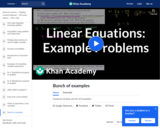
This video is from the Khan Academy subject of Math on the topic of Algebra and it covers Bunch of examples.
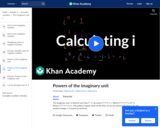
Calculating i raised to arbitrarily high exponents

Students apply their knowledge of linear regression and design to solve a real-world challenge to create a better packing solution for shipping cell phones. They use different materials, such as cardboard, fabric, plastic, and rubber bands to create new “composite material” packaging containers. Teams each create four prototypes made of the same materials and constructed in the same way, with the only difference being their weights, so each one is fabricated with a different amount of material. They test the three heavier prototype packages by dropping them from different heights to see how well they protect a piece of glass inside (similar in size to iPhone 6). Then students use linear regression to predict from what height they can drop the fourth/final prototype of known mass without the “phone” breaking. Success is not breaking the glass but not underestimating the height by too much either, which means using math to accurately predict the optimum drop height.

Sum of Consecutive Odd Integers

Change of Base Formula

This video is from the Khan Academy subject of Math on the topic of Algebra and it covers Change of base formula proof.

College Algebra provides a comprehensive exploration of algebraic principles and meets scope and sequence requirements for a typical introductory algebra course. The modular approach and richness of content ensure that the book meets the needs of a variety of courses. College Algebra offers a wealth of examples with detailed, conceptual explanations, building a strong foundation in the material before asking students to apply what theyve learned.

College Algebra is an introductory text for a college algebra survey course. The material is presented at a level intended to prepare students for Calculus while also giving them relevant mathematical skills that can be used in other classes. The authors describe their approach as "Functions First," believing introducing functions first will help students understand new concepts more completely. Each section includes homework exercises, and the answers to most computational questions are included in the text (discussion questions are open-ended).
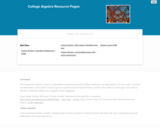
This course covers relations and functions, specifically, linear, polynomial, exponential, logarithmic, and rational functions. Additionally, sections on conics, systems of equations and matrices and sequences are also available.

This book was gathered to use in a 100-level mathematics course at the College Algebra level. Students are expected to begin at an intermediate algebra level. It is geared primarily toward business majors, it can also be useful for social science and other majors as a quantitative studies course.